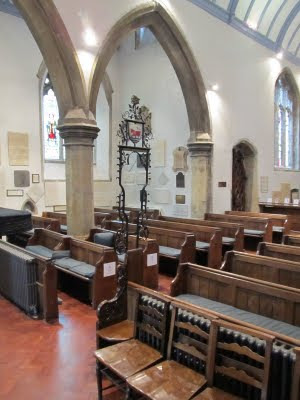
The east window of the chancel contains four panels of high quality stained glass dating from the 13th century; it is some of the earliest stained glass in Oxford.



The Burma Star Association Window. The window represents the three services involved in the Burma Campaign. The glass on the left with the ships anchor represents the Royal Navy. The glass to the right with the motto 'Per ardua ad astra'represents the Royal Airforce. The centre glass shows the 14th Army, once known as 'The Forgotten Army'commanded by Bill Slim (later Field Marshall Lord Slim). The Japanese captured Burma and then crossed into India where the tide was turned at Kohima. The words on the memorial there are used each year on Remberance Sunday in Services all around Britain. FEPOW stands for far East Prisoners of War and below this is the Campaign Ribbon. The window was commissioned by Joe Blewitt a FEPOW who later became Mayor of Oxford.

The Saxon Tower: on the first-floor is the treasury containing rare silver - the earliest piece dates from 1562 - and the Charter of 1612, bearing the arms of James I. Further up the tower you is a 19th century clock mechanism and the door of the prison cell, situated nearby, through which the Protestant martyrs, including Archbishop Cranmer, stepped to their deaths in 1556.

